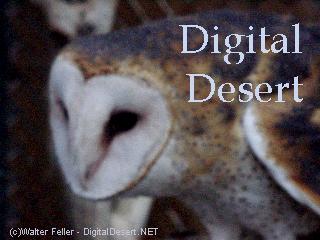--
Barn Owl
Tyto albaFamily: Tytonidae Order: Strigiformes Class: Aves
Barn Owl (Tyto alba)
A stealthy, ghost-like hunter of the night, the barn owl is one of the most widespread owls in the world. With its heart-shaped face, silent flight, and eerie screech, itís a familiar sight in open landscapes, farmlands, and even abandoned buildings.
Where Youíll Find Them
Barn owls stick to open areas like grasslands, wetlands, and chaparral. They avoid dense forests and harsh deserts but donít mind hanging around human settlements. They live throughout California, from sea level up to about 5,500 feet, and can be found year-round, including on most of the Channel Islands.
Hunting & Diet
These owls are nocturnal hunters with an appetite for rodents. Their diet mainly consists of mice, rats, voles, and gophers, but theyíll also snack on shrews, insects, reptiles, and even small birds, especially in winter. They hunt by gliding silently over fields, perching to scan the ground, or hovering before striking.
Where They Sleep & Nest
Barn owls roost in trees, shrubs, cliffs, or human-made structures like barns, abandoned buildings, and even nest boxes. For nesting, they prefer sheltered ledges, crevices, tree cavities, and man-made structures like culverts or burrows.
Water Needs
They donít need to drink much waterómost of their hydration comes from the prey they eat.
Daily & Seasonal Behavior
Barn owls are active all year, primarily at night, though they may be seen hunting at dusk or dawn. Unlike some birds, they donít migrate but tend to stay in the same home range.
Territory & Home Range
Pairs usually stay in one area year-round. A hunting range can be anywhere from 165 acres to nearly a square mile, depending on food availability.
Breeding & Raising Young
Barn owls are monogamous and can nest nearly year-round, though most breeding happens between January and November. They lay 3 to 11 eggs per clutch, typically 5 to 7, and often raise two broods a year. The male feeds the female while she incubates the eggs, and both parents care for the chicks. The young hatch after about three weeks and leave the nest at 52 to 70 days old.
Predators & Competition
Despite their own prowess as hunters, barn owls have their own predators. Great horned owls, prairie falcons, and golden eagles may take young barn owls. Great horned owls also compete with them for food, sometimes making survival tough in shared hunting grounds.
In short, barn owls are natureís rodent control experts, silently patrolling open fields under the cover of darkness. If you see one gliding in the night, youíre witnessing a master of stealth in action!
mice, rats, voles, pocket gophers, and ground squirrels. insects, reptiles, nocturnal hunter Predators prairie falcons, great horned owls, golden eagles
Archive

Barn Owl
|
The Desert Food Chain * Everything has its niche. Who eats what, and what eats who in the desert? Click here to find out what more. |
The nocturnal Barn Owl likes to hunt in areas such as canyons and washes near trees where it can perch. This 15-20 inch tall predator prefers small mammals such as antelope squirrels and mice, but when scarce will attack small birds. After being caught the prey is torn apart and swallowed bones and all. Mostly white with yellow, tan and buff speckled markings, the distinctive heart-shaped white face is rimmed by curved tan feathers.
The Barn owl is a raptor.
For more information on raptors, click here.
Also see > Bird: Carnivore: Predator: Nocturnal
|
The Desert Food Chain * Everything has its niche. Who eats what, and what eats who in the desert? Click here to find out what more. |